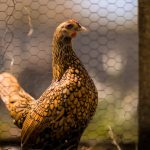Barn cats are semi-feral or feral felines that have adapted to outdoor living, particularly in rural or agricultural settings. These cats are characterized by their independence, resourcefulness, and strong hunting instincts. They excel at catching rodents and small prey, making them valuable for pest control on farms and in barns.
Barn cats are territorial, establishing and defending their areas against other animals. They often display wariness towards humans and prefer outdoor environments to indoor living. The behavior of barn cats is typically elusive and secretive.
They tend to be more active at night and seek shelter during daylight hours. Their ability to find hidden spots can make them difficult to locate. Barn cats possess strong survival instincts and have developed skills to navigate and thrive in rural environments.
Understanding these behavioral traits is essential for creating appropriate living conditions and implementing effective management strategies for barn cats, whether to contain them within specific areas or to deter them from certain spaces.
Table of Contents
- 1 Creating a Safe and Secure Chicken Coop
- 2 Implementing Deterrents to Keep Cats Away
- 3 Providing Adequate Shelter and Resources for Barn Cats
- 4 Using Natural Repellents to Keep Cats at Bay
- 5 Establishing a Feeding Schedule for Barn Cats
- 6 Monitoring and Adjusting Strategies for Success
- 7 FAQs
- 7.1 What are some methods for keeping barn cats away from chickens?
- 7.2 Why is it important to keep barn cats away from chickens?
- 7.3 Are there any natural deterrents that can be used to keep barn cats away from chickens?
- 7.4 What are some signs that barn cats may be preying on chickens?
- 7.5 Should I consider getting a guard dog to keep barn cats away from chickens?
Key Takeaways
- Barn cats are independent and territorial animals, and understanding their behavior is crucial for successful management.
- A secure chicken coop with strong fencing and predator-proofing is essential for protecting chickens from barn cats.
- Implementing deterrents such as motion-activated sprinklers or ultrasonic devices can help keep cats away from the chicken coop.
- Providing adequate shelter, food, and water for barn cats can help discourage them from preying on chickens.
- Natural repellents like citrus peels, coffee grounds, or lavender can be used to deter cats from entering certain areas of the barn.
Creating a Safe and Secure Chicken Coop
Construction and Predator Protection
The coop should be constructed with sturdy materials that can withstand harsh weather conditions and potential predators. Strong wire mesh should be used to enclose the coop and protect the chickens from predators such as foxes, raccoons, and even barn cats.
Design and Layout Considerations
The coop should be elevated off the ground to prevent access from digging predators, and it should have a secure door that can be locked at night to keep the chickens safe from nocturnal threats. Additionally, the coop should be well-ventilated and provide adequate space for the chickens to move around comfortably. Proper lighting and nesting boxes should also be included to encourage egg-laying and provide a comfortable environment for the chickens.
Maintenance and Hygiene
Regular cleaning and maintenance of the coop are essential for keeping the chickens healthy and preventing the buildup of waste and bacteria. By creating a safe and secure chicken coop, farmers and barn owners can protect their poultry from potential threats while also providing a comfortable and conducive environment for egg-laying and overall well-being.
Implementing Deterrents to Keep Cats Away

To keep barn cats away from certain areas or to discourage them from entering specific spaces, it’s important to implement effective deterrents that are safe for both the cats and the environment. One common deterrent is the use of motion-activated sprinklers or ultrasonic devices that emit a high-frequency sound when triggered by movement. These devices can startle cats and discourage them from approaching certain areas without causing them harm.
Another effective deterrent is the use of natural repellents such as citrus peels, coffee grounds, or vinegar, which can be strategically placed around the perimeter of the area to create an unpleasant scent barrier for cats. Additionally, physical barriers such as chicken wire or mesh can be used to block off access to certain areas or to prevent cats from entering spaces where they are not welcome. It’s important to regularly inspect these barriers for any signs of wear or damage and to make necessary repairs or replacements as needed.
By implementing these deterrents, barn owners can effectively keep cats away from sensitive areas while also promoting a safe and humane environment for both the cats and other animals on the property.
Providing Adequate Shelter and Resources for Barn Cats
In order to encourage barn cats to stay within designated areas and discourage them from seeking shelter in unwanted spaces, it’s important to provide them with adequate shelter and resources that meet their basic needs. This includes providing insulated shelters or cozy nooks where cats can seek refuge from the elements and rest comfortably. These shelters should be placed in quiet and secluded areas to provide a sense of security for the cats while also keeping them away from sensitive areas such as chicken coops or storage sheds.
Additionally, providing a consistent source of food and water for barn cats can help keep them within designated areas and discourage them from hunting for prey near livestock or poultry. It’s important to establish a feeding schedule and to provide nutritious food that meets the dietary needs of barn cats. By providing adequate shelter and resources for barn cats, farmers and barn owners can create a conducive environment that meets the needs of these semi-feral or feral cats while also promoting a harmonious coexistence with other animals on the property.
Using Natural Repellents to Keep Cats at Bay
In addition to implementing deterrents, natural repellents can also be used to keep cats at bay in barns or rural settings. One effective natural repellent is citrus peels, which can be scattered around sensitive areas to create an unpleasant scent barrier that deters cats from approaching. Similarly, coffee grounds can also be used as a natural repellent, as their strong scent can discourage cats from entering certain spaces.
Additionally, vinegar can be diluted with water and sprayed around the perimeter of an area to create an unpleasant scent barrier that deters cats from approaching. Furthermore, planting certain herbs such as lavender, rosemary, or rue around sensitive areas can also help repel cats, as these plants emit strong scents that are unpleasant for cats. By using natural repellents, barn owners can effectively keep cats at bay without causing them harm while also promoting a safe and humane environment for all animals on the property.
Establishing a Feeding Schedule for Barn Cats

Benefits of a Consistent Feeding Schedule
By providing a consistent source of food at specific times of the day, barn owners can encourage barn cats to stay within designated areas while also meeting their dietary needs. It’s essential to provide nutritious food that meets the dietary requirements of barn cats, such as high-quality cat food or raw meat.
Monitoring the Feeding Area
Additionally, it’s important to monitor the feeding area regularly for any signs of waste or leftover food, as this can attract unwanted pests such as rodents or insects.
Promoting a Harmonious Coexistence
By establishing a feeding schedule for barn cats, farmers and barn owners can promote a harmonious coexistence between barn cats and other animals on the property while also ensuring that the dietary needs of these semi-feral or feral cats are met.
Monitoring and Adjusting Strategies for Success
Finally, it’s important to monitor the effectiveness of the strategies implemented to keep barn cats at bay and make necessary adjustments as needed. This includes regularly inspecting physical barriers, deterrents, and natural repellents for any signs of wear or damage and making necessary repairs or replacements. Additionally, monitoring the behavior of barn cats and their interactions with other animals on the property can provide valuable insights into the effectiveness of the strategies implemented.
By staying vigilant and making necessary adjustments, barn owners can ensure that their efforts to keep barn cats at bay are successful while also promoting a safe and harmonious environment for all animals on the property. This may include experimenting with different deterrents or natural repellents to find the most effective solution for keeping barn cats away from sensitive areas while also meeting their basic needs. By monitoring and adjusting strategies for success, barn owners can create a conducive environment that promotes a harmonious coexistence between barn cats and other animals on the property.
If you’re looking for ideas on how to keep barn cats away from your chickens, you may also be interested in learning about large chicken coop ideas. A larger coop can provide more space for your chickens to roam and may help deter predators like barn cats. Check out this article on large chicken coop ideas for more information on creating a safe and spacious environment for your flock.
FAQs
What are some methods for keeping barn cats away from chickens?
Some methods for keeping barn cats away from chickens include providing a separate feeding area for the cats, using motion-activated deterrents, and keeping the chicken coop secure.
Why is it important to keep barn cats away from chickens?
It is important to keep barn cats away from chickens to prevent the cats from preying on the chickens and causing harm to the flock.
Are there any natural deterrents that can be used to keep barn cats away from chickens?
Some natural deterrents that can be used to keep barn cats away from chickens include citrus peels, coffee grounds, and lavender plants, as cats are known to dislike these scents.
What are some signs that barn cats may be preying on chickens?
Signs that barn cats may be preying on chickens include missing or injured chickens, as well as evidence of cat tracks or scat near the chicken coop.
Should I consider getting a guard dog to keep barn cats away from chickens?
A guard dog can be an effective deterrent for keeping barn cats away from chickens, as their presence can help to deter cats from approaching the chicken coop. However, it is important to properly train and socialize the dog to ensure it does not harm the chickens.
Meet Walter, the feathered-friend fanatic of Florida! Nestled in the sunshine state, Walter struts through life with his feathered companions, clucking his way to happiness. With a coop that’s fancier than a five-star hotel, he’s the Don Juan of the chicken world. When he’s not teaching his hens to do the cha-cha, you’ll find him in a heated debate with his prized rooster, Sir Clucks-a-Lot. Walter’s poultry passion is no yolk; he’s the sunny-side-up guy you never knew you needed in your flock of friends!







